Makindo Medical Notes"One small step for man, one large step for Makindo" |
|
|---|---|
| Download all this content in the Apps now Android App and Apple iPhone/Pad App | |
| MEDICAL DISCLAIMER: The contents are under continuing development and improvements and despite all efforts may contain errors of omission or fact. This is not to be used for the assessment, diagnosis, or management of patients. It should not be regarded as medical advice by healthcare workers or laypeople. It is for educational purposes only. Please adhere to your local protocols. Use the BNF for drug information. If you are unwell please seek urgent healthcare advice. If you do not accept this then please do not use the website. Makindo Ltd. |
Cerebral Angiography
-
| About | Anaesthetics and Critical Care | Anatomy | Biochemistry | Cardiology | Clinical Cases | CompSci | Crib | Dermatology | Differentials | Drugs | ENT | Electrocardiogram | Embryology | Emergency Medicine | Endocrinology | Ethics | Foundation Doctors | Gastroenterology | General Information | General Practice | Genetics | Geriatric Medicine | Guidelines | Haematology | Hepatology | Immunology | Infectious Diseases | Infographic | Investigations | Lists | Microbiology | Miscellaneous | Nephrology | Neuroanatomy | Neurology | Nutrition | OSCE | Obstetrics Gynaecology | Oncology | Ophthalmology | Oral Medicine and Dentistry | Paediatrics | Palliative | Pathology | Pharmacology | Physiology | Procedures | Psychiatry | Radiology | Respiratory | Resuscitation | Rheumatology | Statistics and Research | Stroke | Surgery | Toxicology | Trauma and Orthopaedics | Twitter | Urology
🧠 Introduction
- 🩸 Angiography visualises the lumen of blood vessels — the “pipes” of the circulation. It helps identify narrowing, occlusion, beading, dissection, aneurysm, or vascular spasm in stroke and other cerebrovascular diseases.
- 🧬 It can detect vascular malformations and track contrast movement temporally (through arterial, capillary, and venous phases) and spatially (in 3D reconstruction).
- 🧲 Modalities include X-ray–based (DSA/CTA) and MRI–based (MRA) techniques. The gold standard remains digital subtraction angiography (DSA), although CTA and MRA have greatly reduced the number of diagnostic catheter angiograms.
🎥 Cerebral Digital Subtraction Angiography (DSA)
- 🏅 Gold standard for vessel imaging — provides the highest spatial and temporal resolution.
- ⚙️ Technique: Catheter introduced (usually via femoral artery; radial increasingly common) → contrast injected (≈5 mL per artery) → dynamic X-ray sequence. Computer subtraction removes bone for a clear vascular image.
- 🕒 Procedure time: 20–30 min under local anaesthetic. Risks: ≈1% stroke, 0.1% mortality, vascular injury, or contrast reaction.
- 📈 Indications: used when findings will alter management — e.g. aneurysm, AVM, vasculitis, pre-operative embolisation. CTA can sometimes outperform DSA for aneurysm detection.
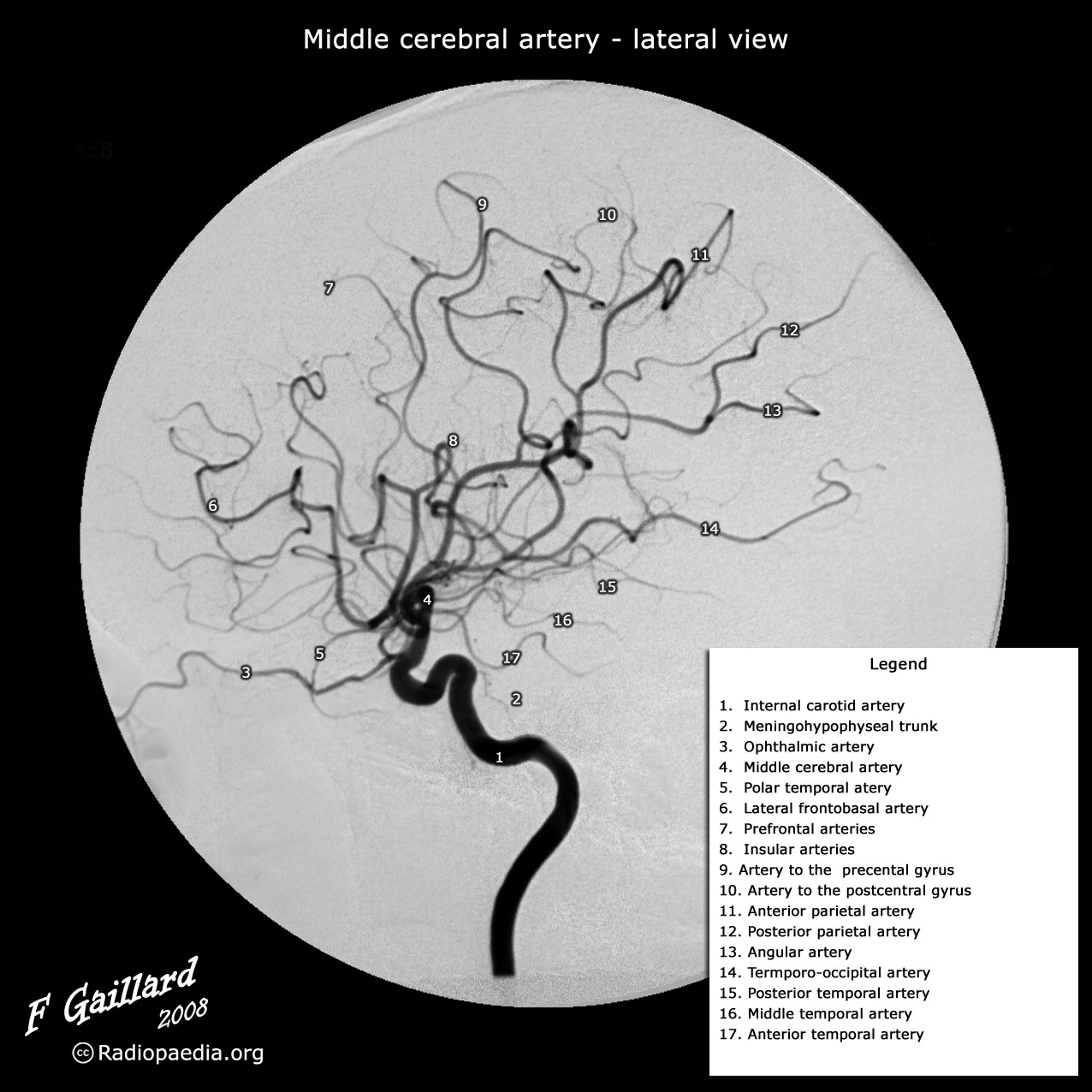
| 📋 Indications for DSA |
|---|
|
🩻 CT Angiography (CTA)
- 💡 Provides rapid 3D vascular imaging using iodinated contrast and CT reconstruction.
- ⚡ Excellent for detecting large vessel occlusion (LVO) in acute stroke → guides thrombectomy.
- 📈 Almost as accurate as DSA for extracranial stenosis and highly accurate for intracranial stenosis and dissection.
- 🚫 Avoid or use cautiously in contrast allergy or renal impairment — check eGFR.
- ⚠️ Carries radiation exposure; uses iodine-based contrast that can cause nephrotoxicity.
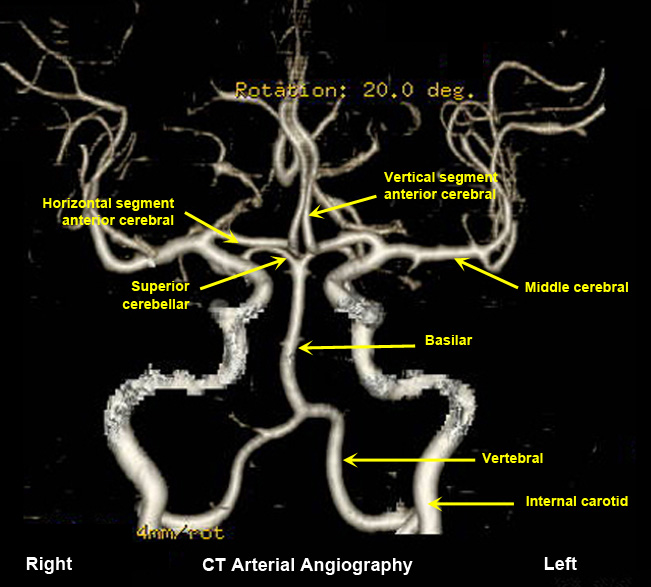
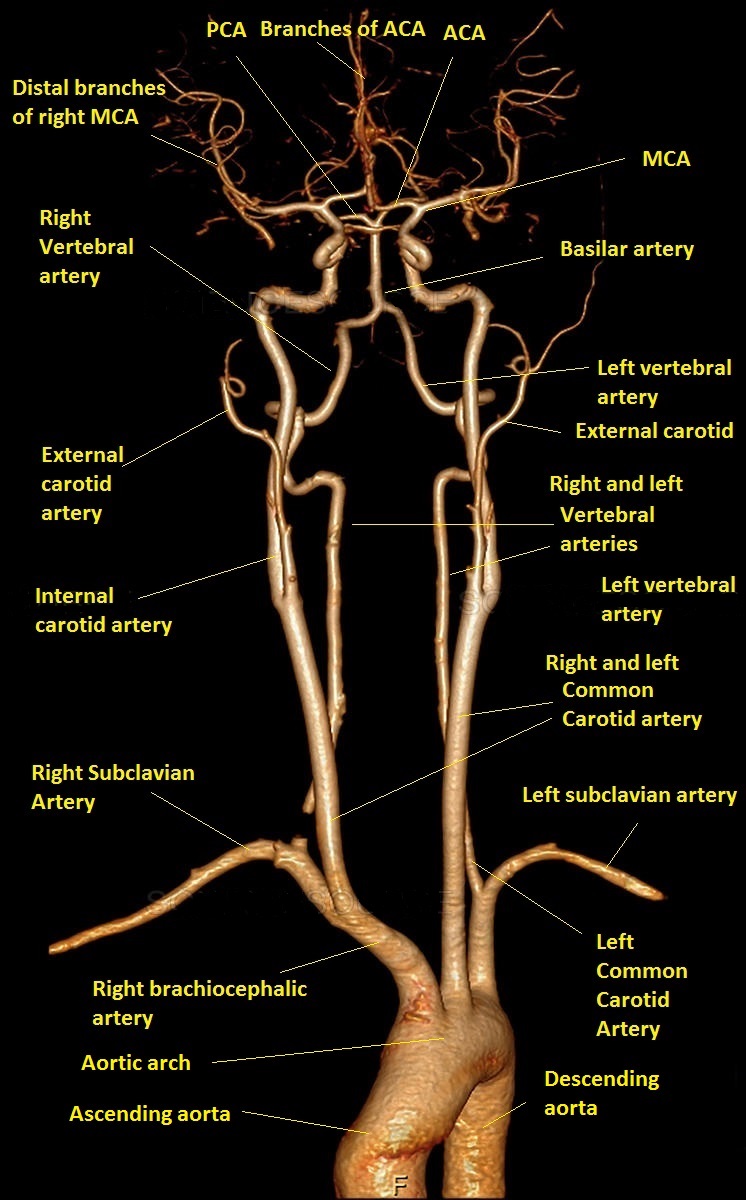
🧲 MR Angiography (MRA)
- 🧠 Non-invasive imaging of cerebral vasculature using blood flow signal differences. Can be done without contrast (TOF or phase-contrast) or with gadolinium contrast.
- Time-of-Flight (TOF): Flow-dependent, uses inflow enhancement of unsaturated blood — good for arteries, may overestimate stenosis.
- Phase-Contrast (PC): Uses velocity phase shifts — good for both arteries and veins, often used for cardiac/aortic studies.
- Contrast-Enhanced MRA (CE-MRA): Gadolinium shortens T1 relaxation, producing high intravascular signal and excellent vessel definition.
- ⚠️ Risks: Gadolinium reactions, nephrogenic systemic fibrosis (rare, CKD), and slight overestimation of stenosis.
- ✅ Accuracy similar to DSA for many cerebral indications; faster and safer for routine use.
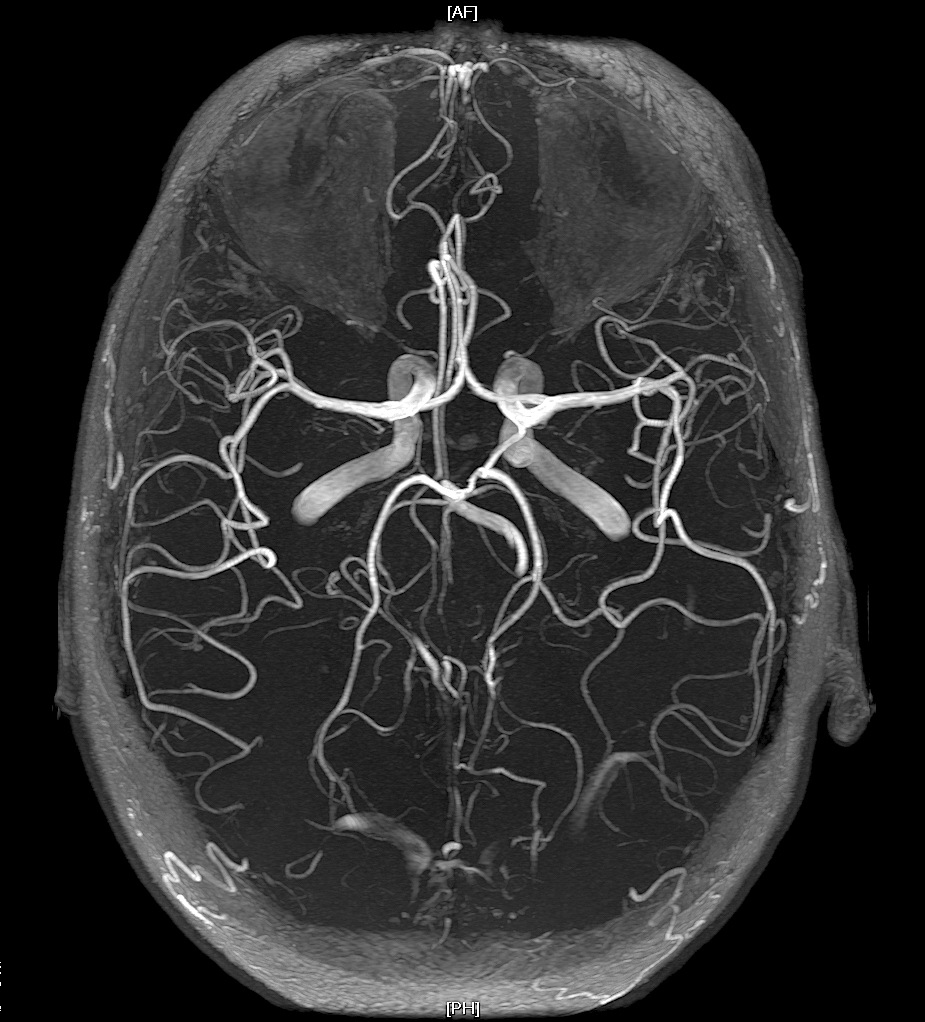
🩸 CT Venography (CTV)
CTV assesses venous anatomy and patency and can be combined with CTA for dual arterial-venous imaging. Particularly useful in suspected Cerebral Venous Thrombosis (CVT) — shows sinus filling defects and collateral drainage.

🧲 MR Venography (MRV)
Investigation of choice in suspected CVT. Demonstrates absence of flow or intraluminal thrombus in dural venous sinuses. Can be performed non-contrast TOF or contrast-enhanced for better delineation.
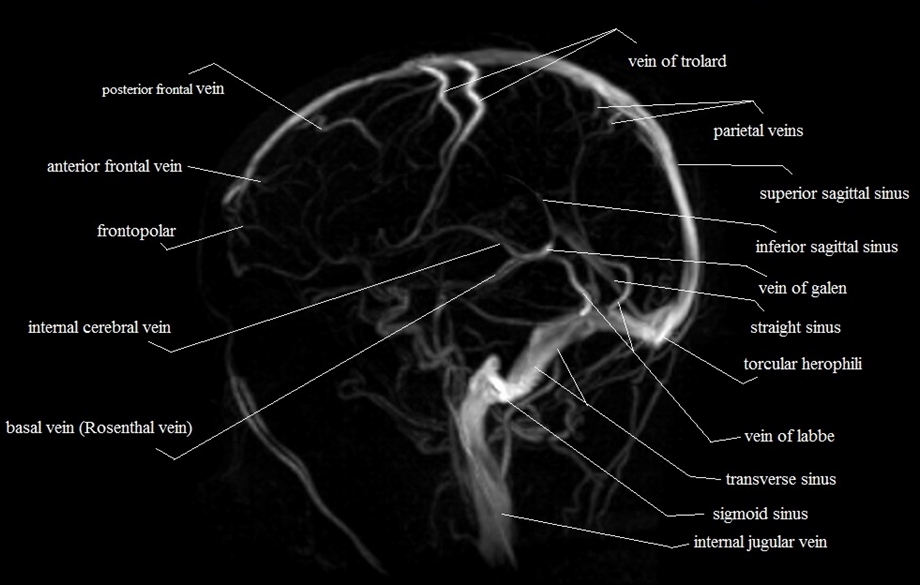
🔎 Angiographic Findings
| 🧩 Aetiology | 🔬 Typical Finding |
|---|---|
| Aneurysm | Focal balloon-like outpouching of vessel wall. |
| Dissection | Smooth tapering (“string sign”), double lumen, or intimal flap; may progress to pseudoaneurysm or occlusion. |
| Vasculitis | Segmental narrowing and dilation → “beading” pattern, especially in medium-sized arteries. |
| Takayasu’s / Moyamoya | Multiple collaterals (“puff of smoke” appearance) from anastomotic vessels. |
🧬 Causes of “Beading” Appearance
| 🧠 Possible Causes |
|---|
|

💡 Teaching tip: - DSA remains gold standard for intervention planning. - CTA excels for acute stroke triage and dissections. - MRA/MRV preferred when radiation or iodine contrast contraindicated. - Beading = think vasculitis, RCVS, or sympathomimetic drugs.